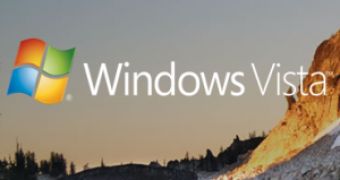Windows Vista introduces a new data management infrastructure compared with Windows XP. Jim Allchin, Microsoft Co-President, Platform and Services Division, has taken the time to address this subject in the Redmond Company's operating system. "It really starts with the Start Menu", he says, describing the functionality of the search box integrated in the Start Menu's interface.
Here on Softpedia you have already been able to read about the search capabilities in Vista, but we did not have Jim Allchin's insight before. Introducing a query in the search box will produce instantaneous results and display them across the Start Menu. Via this method, users will be able to search not only programs, but also documents, emails, web pages, media content etc. From the Start Menu Search box to the pervasive Instant Search Box available throughout the Windows Vista shell, and to the filtering capabilities associated with the search process, Vista has truly innovated the search in Windows. The fact that Vista supports query filter syntax is an argument in this sense.
"We also changed how you can view the information so you can spot things more easily. When you are looking in a folder using Windows Vista, you can easily change the view -- from a list, to details, to icons of various styles. In fact, the view can contain an image of the actual content (e.g., the first page of a spreadsheet) so we can finally start to get away from generic icon images where every Word document looks the same," said Allchin.
Additionally, Microsoft has introduced advanced sorting capabilities in Windows Explorer accessible via the details headers when the window has been set to Details View. In Vista, users are able to alter, add and delete the filters customizing the search. "Also, once you have filtered the files that you want, you can arrange the files in "stacks" based on any field that you are viewing," added Allchin.
Another addition to Vista are the virtual folders, or the Search Folders. These folders are created via the Save Search command. "Some Search Folders are built-in, including "Recent documents," "Recent email" and "Recently changed." No matter what search query I create, I can always decide to save that query as a "saved search" right from the Windows Explorer using the "Save Search" button that appears in the "command bar" whenever the results of a query are shown. When a search is saved, it is always available in the "Searches" folder under Favorite Links. So, not only is my virtual folder (query) saved, but so is exactly how I configured the view of the folder," explained Allchin.
Microsoft has also revamped the Favorites Links and the folder hierarchy in Windows Explorer and the Common File Dialog that delivers an Explorer-based navigation interface to third-party applications.
"Windows Vista goes beyond other systems in finding and organizing information -- making you much more productive once you step into the new world", concluded Allchin.

 14 DAY TRIAL //
14 DAY TRIAL //